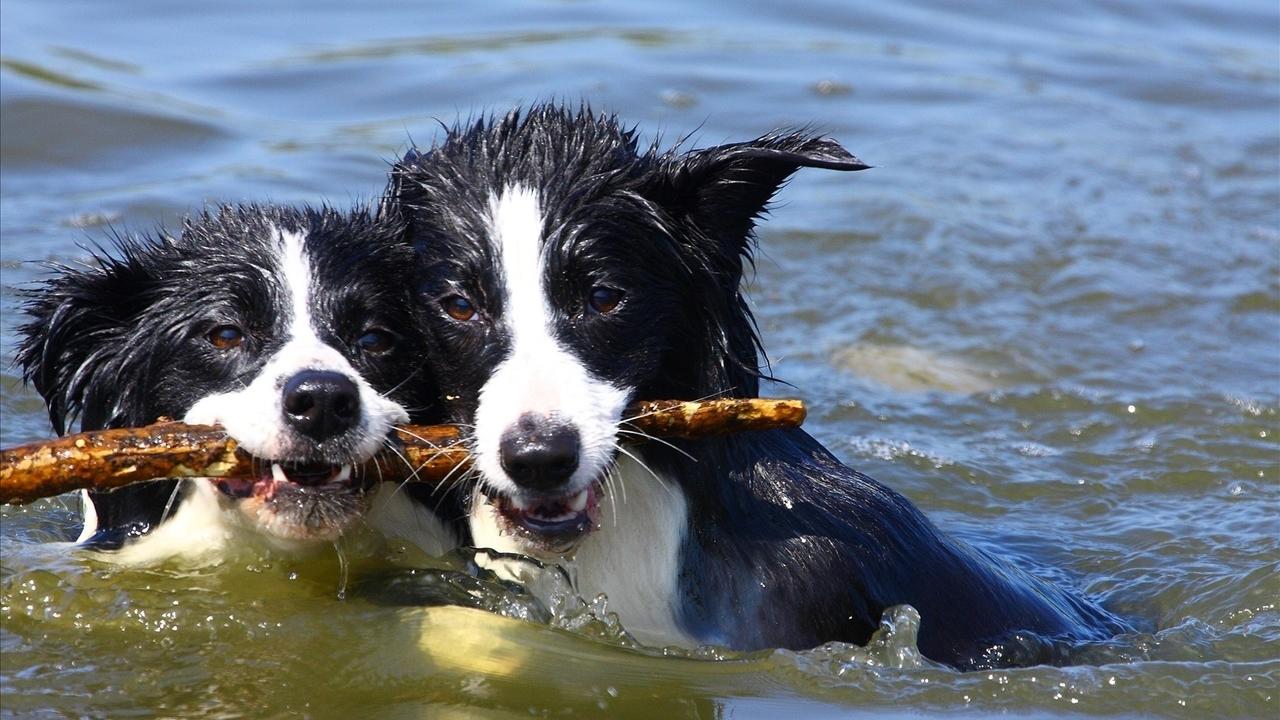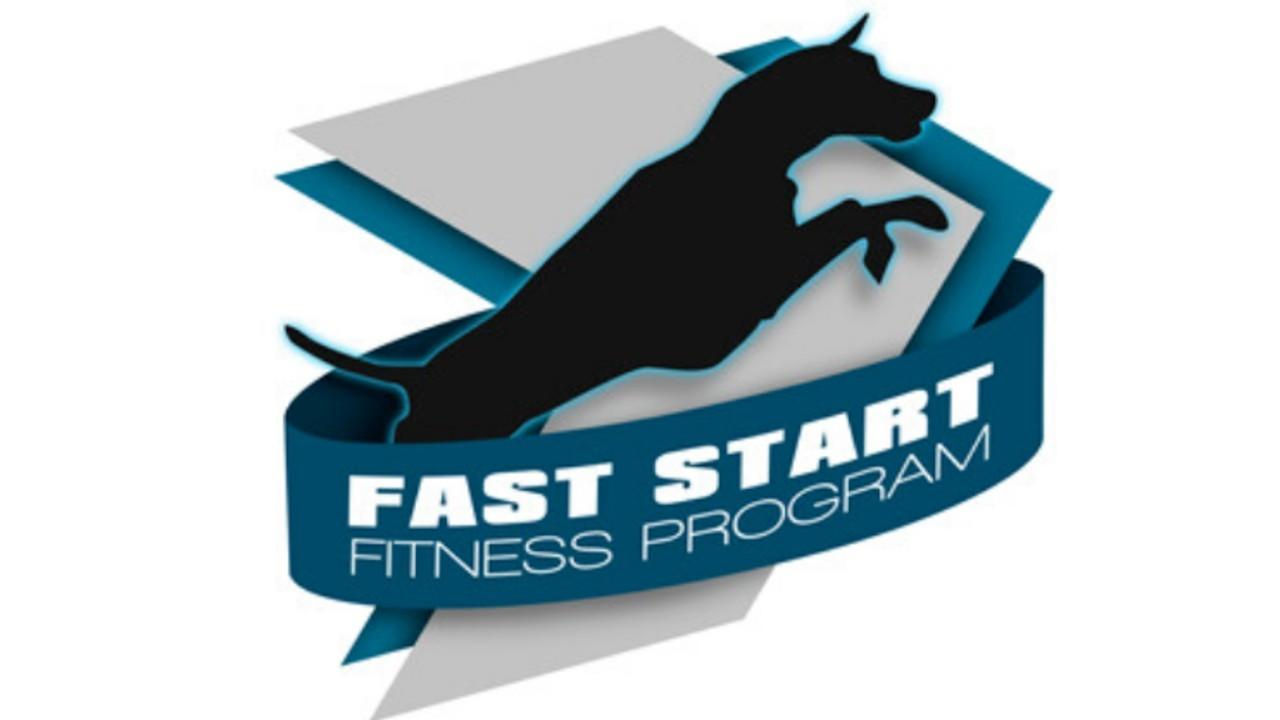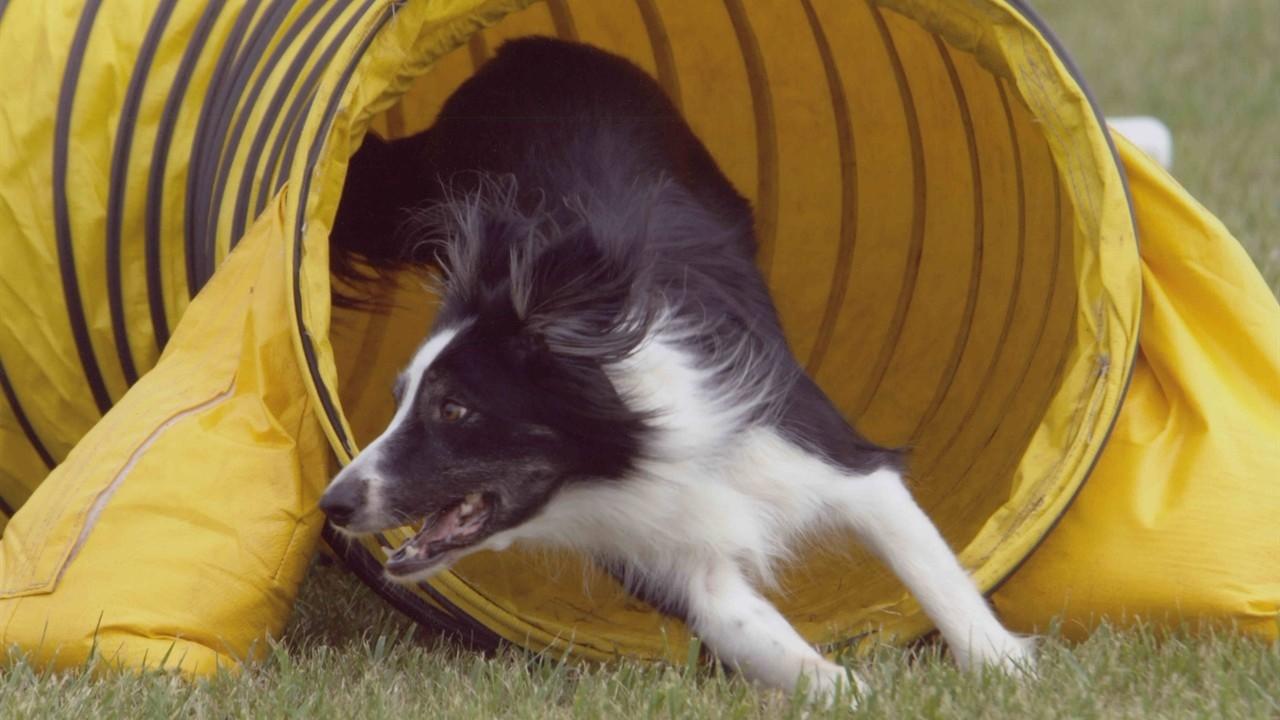The Single Best Way to Lower Your Dog's Risk of Injury in K9 Sports

One of the primary reasons that we encourage fitness training for our canine athletes is to reduce the risk of injury in dog sports.
Fitness training involves improving a variety of fitness components including cardiovascular fitness, flexibility, proprioception, balance and stability, strength, endurance, speed, and power. We use the K9 Fitness Pyramid as a visual representation of these components. Different sports have different specific fitness requirements but all sports involve all of these to some degree. (For more information on this, read our blog on training in the K9 Fitness Pyramid.)
Strength training, more than any other type of fitness training, will reduce the risk of a sports injury significantly.
Strength training is an accepted and well-researched way to reduce the risk of injury in people participating in sports. Using resistance to get stronger is the single best way to counter the risk of a sports injury.

Why Strength Training is the Best
A quick ...
Active Recovery or Rest Days in Your Dog's Fitness Training

Every dog needs a little R and R, right? This can be a confusing topic for those whose dogs train and compete in canine sports.
What exactly does a rest day entail for your dog as a canine athlete? What can your dog do or not do on that day? Why does your dog need it? Is a rest day different from a recovery day?
The Active Rest Day
A rest day is a day that your dog uses to physically and mentally recharge. It is a full day off, not just a few hours or an evening. Your dog's body will use this time to repair tissues.
A rest day is ideally an ACTIVE rest day in that your dog will maintain some degree of activity instead of just lounging all day. Active rest days are more accurately called active recovery days in the context of canine fitness and sports.
Benefits of An Active Recovery Day
Without effective active recovery days, all the rewards and benefits of fitness training can be negated. There are specific physiologic benefits to an active recovery day.
Active recovery ...
A Quick and Easy Fitness Program for Every Dog!

The Fast Start Fitness program was created to help dog owners squeeze canine fitness into their busy lives.
This program provides a broad based, general fitness program that any healthy dog can begin by simply following the step by step exercises. Previously this program was only available to those who had purchased a K9 Fitness Solutions membership subscription, but now it is available to anyone.
The program begins with teaching your dog common fitness movements. From there, the program moves into the foundation of the K9 Fitness Pyramid:

Most importantly, strength training - the single most critical aspect of any fitness training program - is included. With specific strengthening exercises, it provides a solid approach to using body weight resistance for strength training in your dog.
This program is divided into 2 phases, each 6 weeks long. The first phase focuses on mastering the Essential Elements and creating the broad foundation in ...
Stable versus Unstable: Which is Best for Strengthening your Canine Athlete?

Stable versus Unstable: which is the best for strengthening?
Many dog sports enthusiasts train their canine athletes in fitness with the goal of reducing the risk of injury and increasing longevity in their sport, as well as hoping to improve their dog’s performance.
Studies support that strength training is the single most important component of fitness training to keep your dog injury free and thus able to compete for a long time. But there remains a great deal of confusion regarding strength training in dogs and just how to do it.
Strength training is a type of training that increases strength by gradually increasing the resistance the muscles must overcome.
In people, strength training often involves the use of external weights (think dumbbells, barbells, weight machines) and occasionally just body weight resistance (think push-ups, pull ups, and sit-ups.) In dogs, this is most often done using body weight resistance, but can also be done using external weights like weigh...
Is Your Dog Strong Enough? Find out with this quick assessment.

Dog sports are physically demanding. Agility, flyball, and lure coursing are all performed at high speeds. Throw in some turns at speed and it gets intense. Agility and protection sports add obstacle performance requirements, and surface and course variations. These are all incredibly demanding on your dog.
While the variety of dog sports is exhilarating and the speed is addictive, these are not sports for the weak of mind or body. Fortunately, most dog sports competitors understand that agility and other sports are not exactly a walk in the park and that our canine teammate is taking the brunt of the intensely athletic nature of the sport.
Every competitor must ask themselves if they have done everything they can to physically prepare their four-legged teammate for the challenge. Strength is the number one component of fitness that must be improved (and then maintained) in your dog throughout your dog’s sporting career. Click here to find out how your dog's body gets stronger w...
6 Ways to Avoid Injury in Agility Dogs

Nearly 1 in 3 agility dogs will suffer an injury that is directly related to their sport. To put it into perspective it means that between you and your two agility besties - one of you is going to be out of the game for a bit. Or, another way to look at it, if you have 3 dogs that run agility, one of those dogs is going to get injured doing it.
The dog with the highest probability of being injured is the inexperienced (less than 4 years in the sport) border collie. The statistics show that:
- The injury will probably occur on a bar jump, A-frame, or dogwalk by colliding with the equipment, or the ground.
- There are almost equal chances of it happening in practice or competition.
- There is about a 1 in 5 chance it will be a shoulder soft tissue injury with a 50% chance it takes him out of the sport for a month.
- There is a 4 in 5 chance it will be a soft tissue injury to the neck, back, hip, iliopsoas or elsewhere and a 50% chance it takes your dog out of the game for more tha...